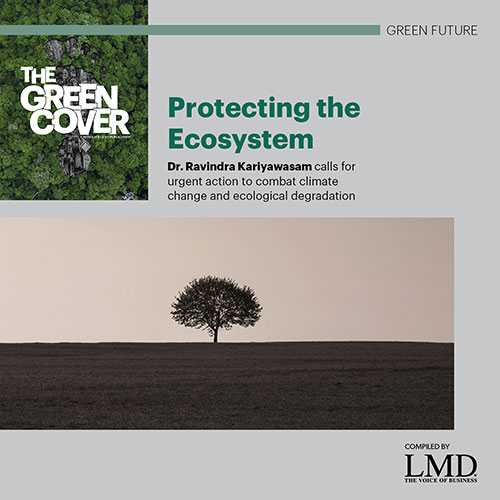WILDLIFE CONSERVATION
Beyond the Forest
Prof. Nihal Dayawansa uncovers the human and ecological consequences of habitat fragmentation

Q: What are the primary drivers of habitat loss and fragmentation in Sri Lanka today?
A: Habitat loss and fragmentation in Sri Lanka primarily stem from rapid, large-scale development initiatives including urban expansion, infrastructure projects and encroachment by both public and private sectors for unsustainable agriculture and other purposes.
Furthermore, unsustainable land use practices, deforestation and poor waste management have aggravated the degradation of natural habitats.
Beyond these macro-level threats, we must also consider the destruction of microhabitats caused by invasive species, pollution and climate change, which form the evil sextet together with habitat destruction and fragmentation, over-exploitation and chains of extinction.
Q: How have these changes affected endemic and endangered species in Sri Lanka?
A: Since Sri Lanka’s biodiversity is highly vulnerable – particularly its endemic and endangered species, it has become a biodiversity hotspot. This phenomenon isn’t simply a celebration of unique species – it’s also a critical alert that these rich ecosystems face exceptional levels of threat and need urgent conservation.
The ecological consequences of habitat loss and fragmentation are severe and multifaceted. Habitat loss leads to the direct disappearance of critical living spaces and vital resources, while fragmentation disrupts ecological connectivity by adversely affecting species throughout their life cycles (especially during breeding and migration) and creating human-wildlife conflicts.
Q: From an ecological perspective, what are the most significant consequences of habitat fragmentation for wildlife populations?
A: Fragmentation reduces gene flow between populations, diminishes genetic diversity and undermines the minimum viable populations that are needed for long-term survival. It disrupts wildlife movement and migratory patterns, alters species interactions among newly formed ecotones (habitat interfaces), and increases exposure to edge effects such as increased predation, invasive species and human-wildlife problems.
As a result, isolated populations are more vulnerable to extinction particularly under pressure from climate change, land use shifts and invasive species establishment. On a finer scale, destruction of microhabitats as a consequence of fragmentation is often overlooked.
Q: What conservation strategies do you believe are most effective in addressing habitat fragmentation and how can we restore or reconnect fragmented habitats?
A: Strengthening and expanding Sri Lanka’s Protected Area (PA) network by extending conservation beyond PA boundaries through the identification and safeguarding of key ecological zones.
Effective strategies include the establishment of wildlife corridors, buffer zones and stepping stones that facilitate safe movement between habitats. Restoration of degraded ecosystems, participatory land use planning and targeted environmental education can foster coexistence and resilience.








